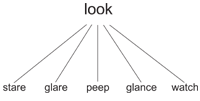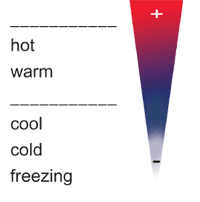An article highlighting useful techniques for autonomous vocabulary learning.
Everyone has their own way of learning vocabulary. For some people random word lists will seem to be the most appropriate, usually with a translation into the mother tongue. Others will favour some kind of organisation, perhaps organising their vocabulary through topic, word category or word frequency. Some learners will find it effective to use vocabulary exercises in order to acquire new vocabulary, while others will use vocabulary cards and regularly test themselves to check whether new items have been learnt. All of these methods are effective in their own right and will suit different individuals in different ways. What they often do not take account of, however, is the usefulness of the relationships between words themselves within the target language. Exploiting such relationships can be a very effective additional method of organising and storing items of vocabulary and may help learners to learn and remember new items. Examples of such relationships are:
Hyponymy
Chair, bench, armchair, bar-stool, pew, rocking-chair and deck-chair are all types of seat. Thus, they are related to each other as examples of a type and have a one-way relationship with the head-word, seat (a chair is a seat, a bench is a seat and so on, whereas a seat is not necessarily a chair). Similarly, car, bus, van, tram, lorry, motor-cycle and taxi are all types of vehicle. Learners may find it productive to store items of vocabulary under head words like these in the form of simple diagrams or "spider-grams", as follows:

These diagrams can, of course, be added to whenever a new word in this category crops up.
Antonymy
Associating words through their opposites appears to be quite a powerful relationship. When asked what word they associate with ‘hot’, many people will immediately answer ‘cold’, rather than, say, ‘desert’, ‘sun’ or ‘weather’. Learners may find it useful to store words with words that convey an opposing concept, for example:
![]()
Clines
Many adjectives, though close in meaning, are not synonyms but are related through degree, with their meaning expressing a greater or lesser degree of a particular concept. Once again, learners may find it helpful to store words in this way. Gaps in the diagrams can be filled as new words are learnt. For example:
 |
In the case of adjectives applied to weather, the words ‘boiling’ and ‘mild’ could be added to the diagram.
|
Collocation
It is clearly useful to learn words which typically "go together", as in ‘perform a task’, ‘make a suggestion’ and ‘do one’s homework’. Words can also be stored in this way in the form of diagrams or mind maps and this may aid recall and memorisation. In the case of verb + noun collocations, they can be organised around the noun as follows:

It can be worthwhile pointing out to learners the advantages of storing items of vocabulary in the above ways. Using such diagrams and mind maps will probably appeal to the more visual type of learner (particularly if different colours are also used) but storing items of vocabulary in a more systematic way should be of benefit to most learners.




No comments yet